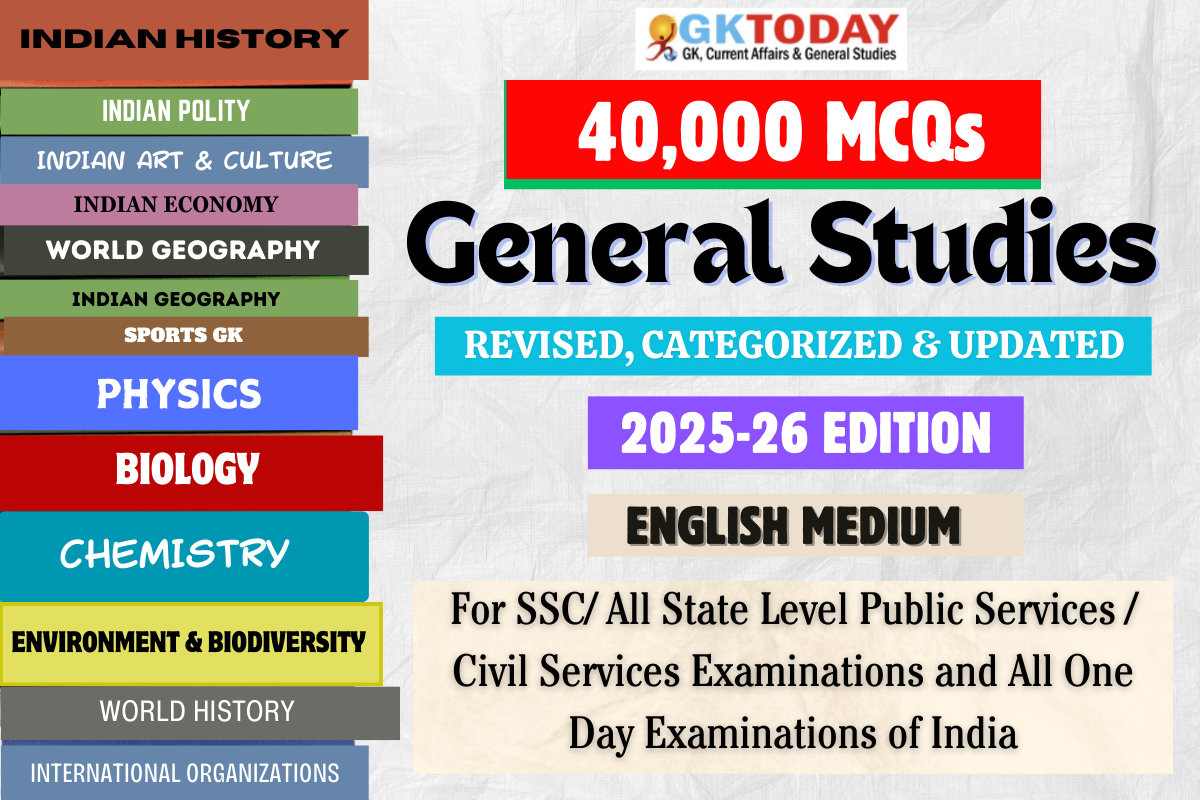Modern Indian History MCQs
Multiple choice questions on Modern Indian History & Freedom Struggle for General Studies and GK preparation of SSC, NDA, CDS, UPSC, UPPSC and State PSC Examinations.
41. The All India Muslim League was founded by ___:
[A] Agha Khan
[B] Mohammad Ali Jinnah
[C] Hakim Ajmal Khan
[D] Maulana Ahmed Ali
Show Answer
Correct Answer: A [Agha Khan]
Notes:
The All-India Muslim League was founded by the All India Muhammadan Educational Conference at Dhaka (now Bangladesh), in 1906. Aga Khan III was one of the founders and the first president of the All- India Muslim League, and served as President of the League of Nations from 1937-38. He was nominated to represent India to the League of Nations in 1932. He was instrumental in the creation of Pakistan.
42. Which of the following events is not considered for the time being of Viceroy Lord Lytton?
[A] Afghan War
[B] Burma war
[C] Arms Act
[D] Press Act
Show Answer
Correct Answer: B [Burma war]
Notes:
There have been three Burmese Wars or Anglo- Burmese Wars. They are as follows:
First Anglo-Burmese War (1824 to 1826): during the viceroyalty of Lord Amherst;
Second Anglo-Burmese War (1852 to 1853): Lord Dalhousie;
Third Anglo-Burmese War (1885): Lord Dufferin.
43. Which of the following rebellion occurred due to the removal of King Bharmal?
[A] Khasi Rebellion
[B] Surat Rebellion
[C] Kutch Rebellion
[D] Bhil Rebellion
Show Answer
Correct Answer: A [Khasi Rebellion]
Notes:
The people in Kutch rose against the British when in 1819, they deposed Maharao Bharmal II, the king of Kutch, and placed his infant son on the throne. The masses got violent and the British had to opt for conciliation. The Kutch rebellion is regarded as the first uprising against the British Raj.
44. What was the name of Swami Vivekananda’s Guru?
[A] Paramhansa Yogananda
[B] Ramana Maharishi
[C] Adi Shankaracharya
[D] Ramkrishna Paramhansa
Show Answer
Correct Answer: D [Ramkrishna Paramhansa]
Notes:
Ramakrishna Paramahansa was the guru of Swami Vivekananda. After death of Ramakrishna, his chief disciple Swami Vivekananda popularized his ideas among Western audiences and founded both the Ramakrishna Math, which provides spiritual training for monastics and householder devotees, and the Ramakrishna Mission, to provide charity, social work and education.
45. The founder of the ‘Brahmo Samaj’ was ____:
[A] Raja Ram Mohan Roy
[B] Swami Dayananda Saraswati
[C] Swami Vivekananda
[D] Ishwar Chandra Vidyasagar
Show Answer
Correct Answer: A [Raja Ram Mohan Roy]
Notes:
Brahmo Samaj was conceived at Kolkata in 1830 by Devendranath Tagore and Ram Mohan Roy as reformation of the prevailing Brahmanism of the time (specifically Kulin practices) and began the Bengal Renaissance of the 19th century pioneering all religious, social and educational advance of the Hindu community in the 19th century. n practice, a Brahmo Samaj is an assembly of all sorts and descriptions of people without distinction, meeting publicly for the sober, orderly, religious and devout adoration of “the (nameless) unsearchable Eternal, Immutable Being who is the Author and Preserver of the Universe.
46. Who was the first Governor General of Bengal?
[A] William Bentick
[B] Warren Hastings
[C] Robert Clive
[D] Charles Cornawallis
Show Answer
Correct Answer: B [Warren Hastings]
Notes:
Warren Hastings was the first Governor of the Presidency of Fort William (Bengal) from 28 April, 1772 to 20 October 1774. In 1774,he was appointed the first Governor-General of Bengal. He was also the first governor of India.
47. In which year was the Indian National Congress formed?
[A] 1835
[B] 1875
[C] 1885
[D] 1901
Show Answer
Correct Answer: C [1885]
Notes:
The Indian National Congress was founded in 1885 by Indian and British members of the Theosophical Society movement, including Scotsman Allan Octavian Hume. Hume organised the first meeting in Bombay with the approval of the Viceroy Lord Dufferin.
48. Who among the following Viceroys became a victim of one of the convicts during his visit to the Andamans?
[A] Lord Curzon
[B] Lord Mayo
[C] Lord Ripon
[D] Lord Lytton
Show Answer
Correct Answer: B [Lord Mayo]
Notes:
Sher Ali was given life imprisonment at the penal settlement in Andaman Islands, when he stabbed and killed Lord Mayo, during the British Viceroy’s official visit to Port Blair on 8th February 1872. Mayo was visiting the convict settlement at Port Blair in the Andaman Islands for the purpose of inspection.
49. In 1917, Mahatma Gandhi organised a Satyagraha in the Kheda district of Gujarat in support of the ___:
[A] Cotton mill workers who were demanding better wages
[B] Women who were struggling against the oppressive patriarchal system
[C] Tribals whose customary rights were being violated
[D] Peasants who were affected by crop failure and a plague epidemic
Show Answer
Correct Answer: D [Peasants who were affected by crop failure and a plague epidemic]
Notes:
It was the third Satyagraha movement after Champaran Satyagraha and Ahmedabad mill strike. Gandhi organised this movement to support peasants of the Kheda district. People of Kheda were unable to pay the high taxes levied by the British due to crop failure and a plague epidemic.
50. Which of the following pair is incorrect?
[A] Comrade-Mohammed Ali
[B] Young India-Lala Lajpat Rai
[C] Indian Sociologist-Lala Har Dayal
[D] Common Weal-Annie Besant
Show Answer
Correct Answer: B [Young India-Lala Lajpat Rai]
Notes:
Young India was a weekly paper or journal in English published by Mohandas Karamchand Gandhi from 1919 to 1932. He used Young India to spread his unique ideology and thoughts regarding the use of nonviolence in organizing movements and to urge readers to consider, organise, and plan for India’s eventual independence from Britain.

